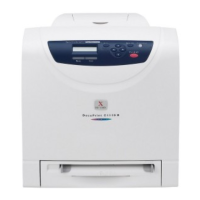Chapter 10 Principle of Operation
10.2 Telephone Call Connection Mechanism
10-6
10.2.2 Telephone Call Connection Mechanism
1 When the handset is lifted, the hook switch is activated and a transmission signal (400Hz/
48VDC), called a dial tone (DT), is sent from the local switch. The dial tone is audible at the
handset speaker, indicating that the calling party can start dialing.
2 Entering the telephone number by rotating the dial or pushing the buttons transmits the number
to the local switch.
There are two types of telephone line corresponding to the two ways of transmitting the phone num-
ber. They are known as dial types. Most recent telephones can automatically distinguish the dial
type.
One type is "Pulse Dialing (PD)", also called "Dial Pulse (DP)". After the rotary dial on a dial phone is
rotated, the dial returns to its original position. While returning, the electric current is interrupted
(dividing the signal into pulses) the number of times corresponding to the number dialed. The switch
derives the number from the number of pulses. When the pulse repetition rate is ten pulses per sec-
ond, it is referred to as 10PPS (Pulses Per Second), when twenty, 20PPS.
The other type is a method known as "Tone Dialing (TD)", formally called "Dual-Tone Multi-Fre-
quency (DTMF)". Each button on a push-button phone is assigned a unique pair of frequencies (the
"tone"), from which the switch derives the number.

